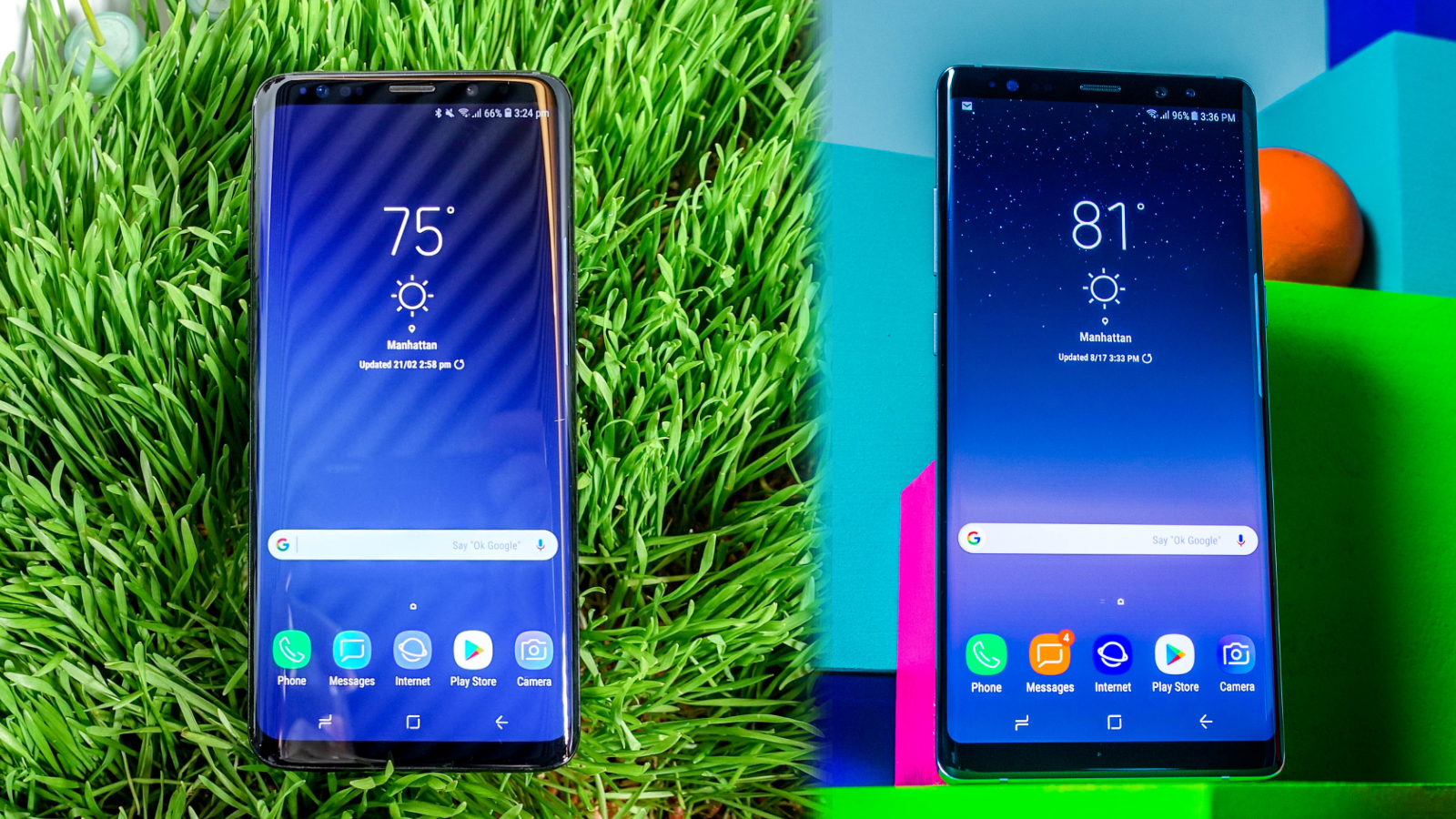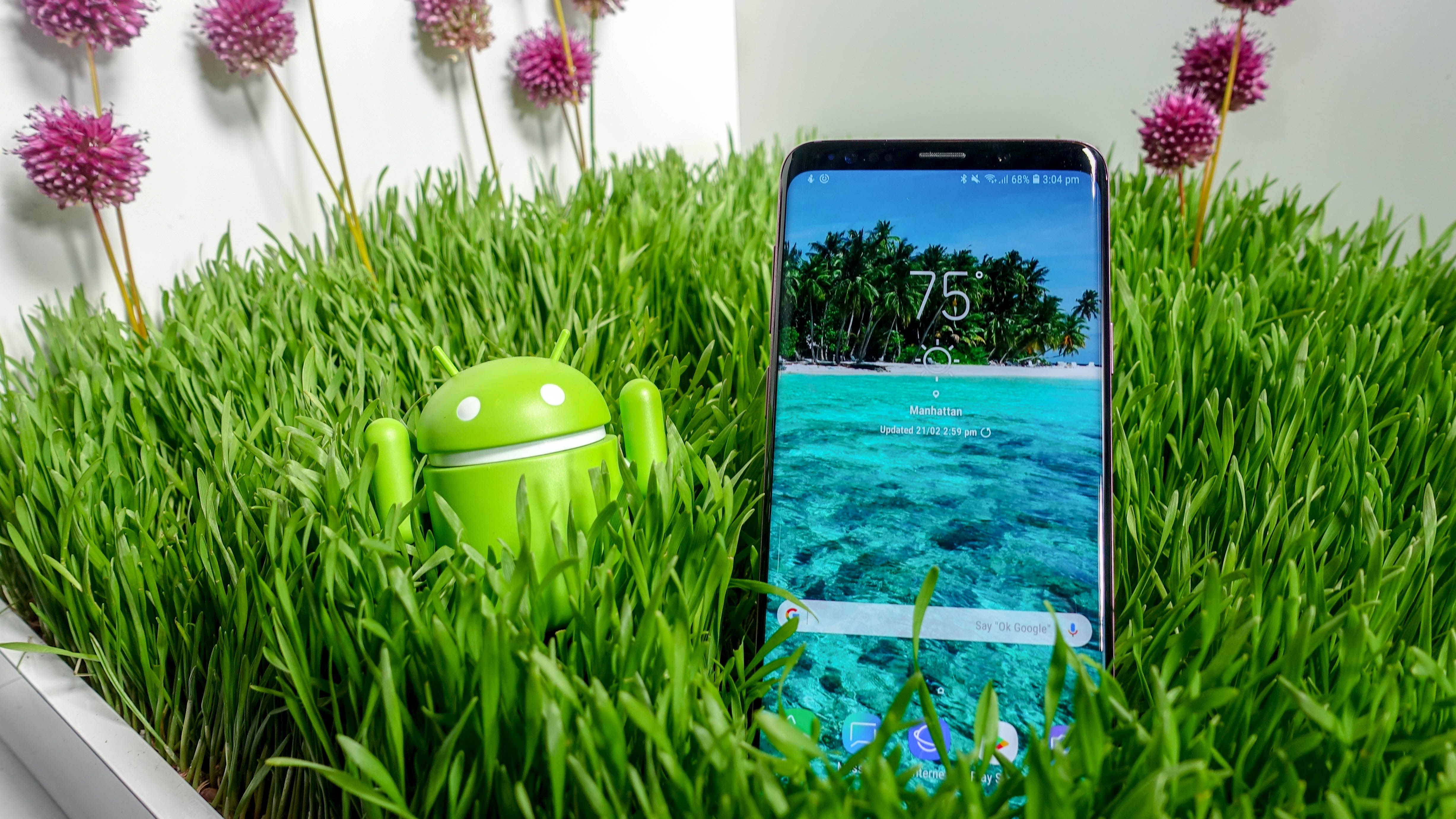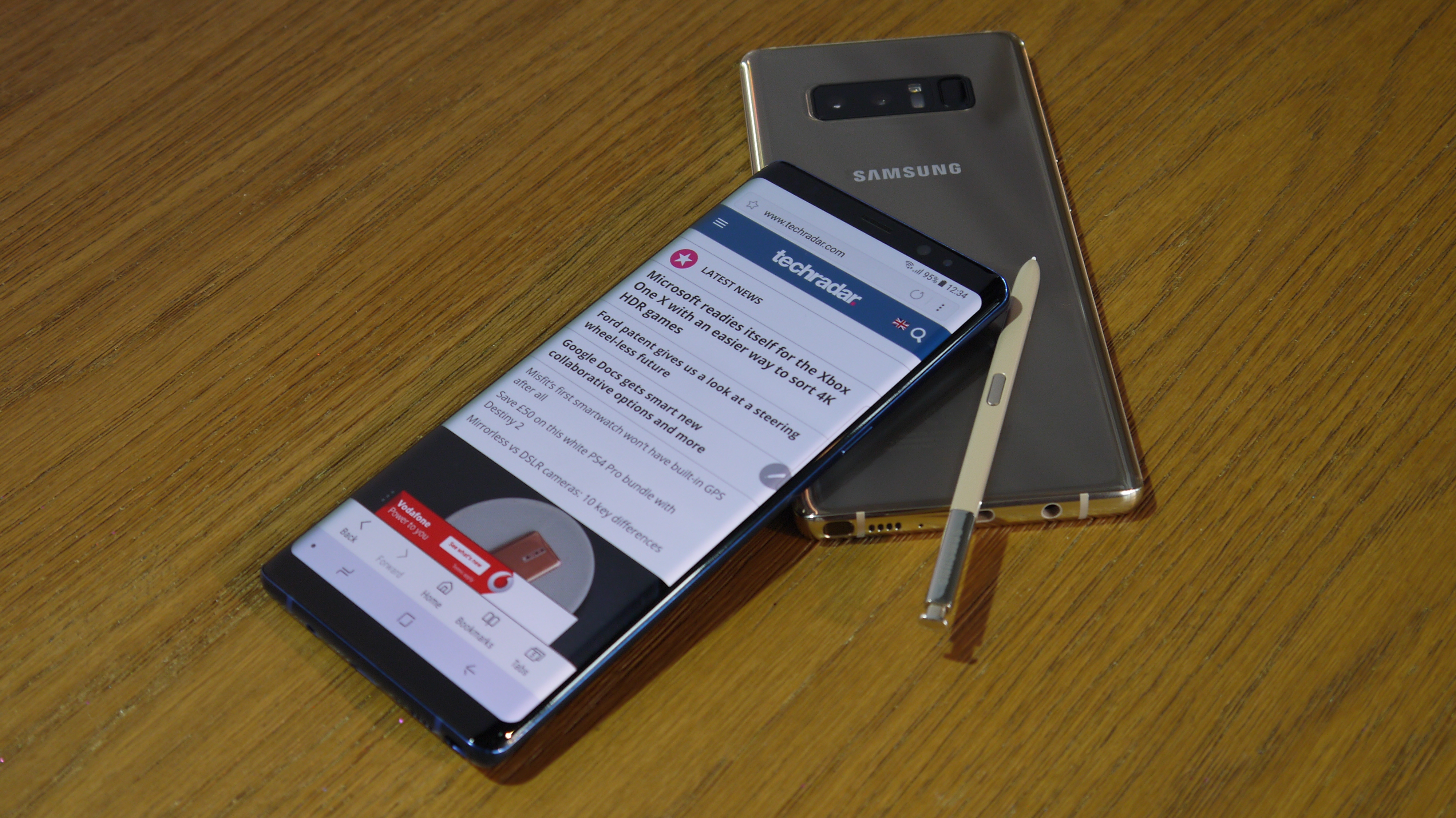Samsung Galaxy S9 Plus vs Samsung Galaxy Note 8
Phablet fight

The Samsung Galaxy S9 Plus looks to be a phablet fan’s dream and its main competition could come from another Samsung phone, namely the Samsung Galaxy Note 8.
While the S9 Plus is newer and more powerful (at least in theory) that doesn’t necessarily mean the Note 8 isn’t worth considering though, as with the Galaxy Note 8 you get a stylus.
And those aren’t the only differences between these two phones, so read on to find out everything else you need to know about how they compare.

Samsung Galaxy S9 Plus vs Samsung Galaxy Note 8 design
The Samsung Galaxy S9 Plus has a similar but slightly less angular design than the Galaxy Note 8, as both phones have a glass back, a metal frame and a curvy screen with small bezels above and below.
The cameras and fingerprint scanners are positioned differently though, as while both phones have dual-lens cameras on the back, the S9 Plus stacks them vertically with the fingerprint scanner below, while the Note 8 has them horizontally placed with the scanner to the side.

Other differences include the dimensions, with the Galaxy S9 Plus coming in at 158.1 x 73.8 x 8.5mm, while the Galaxy Note 8 is slightly larger in every dimension at 162.5 x 74.8 x 8.6mm. The Note 8 is unsurprisingly therefore also slightly heavier at 195g, while the Galaxy S9 Plus is 189g.
The two phones are also available in different colors – the S9 Plus is launching in Midnight Black, Coral Blue and Lilac Purple, while the Note 8 is available in Midnight Black, Maple Gold, Orchid Grey and Deep Sea Blue.
Sign up for breaking news, reviews, opinion, top tech deals, and more.
Both phones are IP68 certified though, meaning they’re dust proof and water resistant to a depth of 1.5 meters for up to 30 minutes.

Samsung Galaxy S9 Plus vs Samsung Galaxy Note 8 display
Both of these phones have big screens of course, but the 6.3-inch Samsung Galaxy Note 8 is slightly bigger than the 6.2-inch Samsung Galaxy S9 Plus.
Other than that they’re very similar, with both being curved, both using Super AMOLED, both having 18.5:9 aspect ratios and both having QHD+ resolutions.
As well as being bigger though, the Galaxy Note 8 has its stylus, giving you another way to interact with the screen so you can really make the most of all that space.

Samsung Galaxy S9 Plus vs Samsung Galaxy Note 8 OS and power
If you live in most parts of the world then you’ll be able to buy a Samsung Galaxy S9 Plus with an Exynos 9810 octa-core chipset, which has four cores running at 2.7GHz and four running at 1.7GHz, but if you’re in the US you’ll get it with a similarly speedy octa-core Snapdragon 845 chipset. Those are both new, top-end mobile chipsets and in both cases you get 6GB of RAM.
The Samsung Galaxy Note 8 also has 6GB of RAM but the chipsets are different. In most of the world you get the octa-core Exynos 8895, which is the predecessor of the 9810 and has four cores running at 2.3GHz and four clocked at 1.7GHz.
If you’re in the US you get the octa-core Snapdragon 835, which again is the last generation of that chip and has four cores clocked at 2.35GHz and four running at 1.9GHz. The upshot is that the Galaxy Note 8 is a very powerful phone, but thanks to its newer chipsets the Samsung Galaxy S9 Plus should in theory be even more powerful.

The Galaxy S9 Plus also supports Gigabit LTE, which means that you can theoretically get faster mobile data, though only if your network supports it.
There’s little difference in operating system, as while the Galaxy S9 Plus ships with Android Oreo and the Note 8 landed with Nougat, the latter can now be updated to Oreo, though it won’t be supported with updates for as long as the S9 Plus.
The Galaxy S9 Plus also comes out on top when it comes to storage, as there’s 128GB built-in plus a microSD card slot, though the Galaxy Note 8 comes with a still-substantial 64GB and a microSD card slot.

Samsung Galaxy S9 Plus vs Samsung Galaxy Note 8 camera and battery
Both the Samsung Galaxy S9 Plus and Samsung Galaxy Note 8 have dual-lens cameras, but they’re quite different.
The Galaxy S9 Plus has two 12MP ones, one of which is a telephoto one with a fixed aperture of f/2.4, while the other is a wide-angle one which cleverly lets you switch between an f/2.4 aperture and an f/1.5 aperture – the latter being good for low light.
The Galaxy Note 8’s lenses both have a fixed aperture, there’s a wide-angle one that’s f/1.7 and a telephoto one that’s f/2.4, so it's less flexible, but we found it to be a highly capable camera. And both the Note 8 and S9 Plus have optical image stabilization.
The Samsung Galaxy S9 Plus also has some new video features, as it can record slow motion footage at 960fps, while the Note 8 tops out at 240fps.
In fact, slow motion seems to have been a major focus for Samsung, as there are also new slow-motion shooting modes, such as the ability to set a focus area which will cause the camera to start recording in slow motion when it detects movement. And with the S9 Plus you can easily turn a slow-motion video into a GIF and even set it as your lock screen wallpaper.
The front-facing cameras aren’t so different, as both phones have an 8MP f/1.7 one, but in the case of the S9 Plus there’s a new ‘AR emoji’ feature, letting you use the camera to create an emoji from your face, mimicking your expressions.
One area that you might expect to be better on the Note 8 given its larger screen is battery, or rather you might expect a bigger battery, but in fact it’s smaller at 3,300mAh to the 3,500mAh one in the Galaxy S9 Plus.
Of course, that doesn’t necessarily mean the Galaxy S9 Plus will last longer, and in our review we found that the Samsung Galaxy Note 8 offers all day life, so it’s not overly lacking in any case. Both phones charge up quickly too, as well as supporting wireless charging.
Takeaway
With a bigger battery, more power, increased storage and a more feature-packed camera the Galaxy S9 Plus stands out from the Note 8 in a lot of ways.
But even ignoring cost, which is mighty high at £869 for the S9 Plus ($839, AU$1,349) - though we expect official prices in these regions to differ) there are reasons you might prefer Samsung’s other phablet flagship, such as its bundled stylus and its marginally larger screen.
In fact - as our review attests - you really can’t go wrong with the Note 8 if a big screen phone is what you want. The same will probably be true of the Samsung Galaxy S9 Plus, but you’ll have to wait for our full review to know for sure.
- The Samsung Galaxy Note 9 is still to come
James is a freelance phones, tablets and wearables writer and sub-editor at TechRadar. He has a love for everything ‘smart’, from watches to lights, and can often be found arguing with AI assistants or drowning in the latest apps. James also contributes to 3G.co.uk, 4G.co.uk and 5G.co.uk and has written for T3, Digital Camera World, Clarity Media and others, with work on the web, in print and on TV.